Related Flashcards
Related Topics
Cards In This Set
| Front | Back |
|
External Environment
|
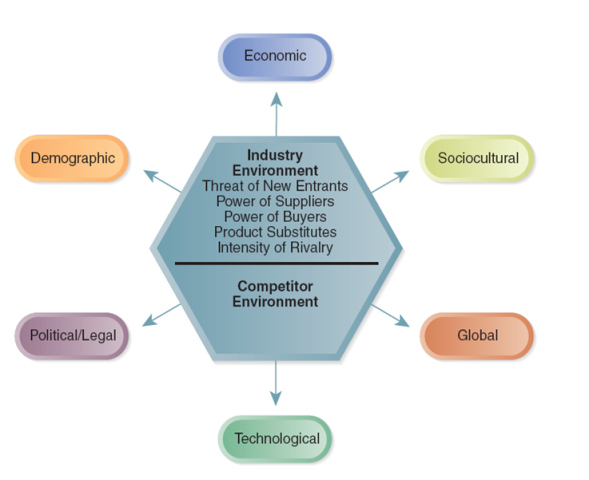 Divided into 3 major areas (environments): 1) General 2) Industry 3) Competitor |
|
General Environment
|
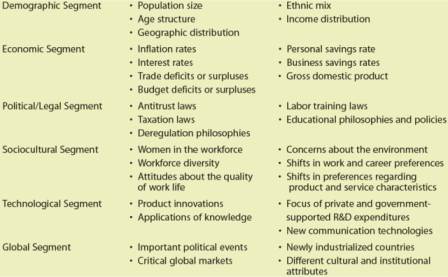 Composed of dimensions in the broader society that influence an industry and the firms within it. 6 SEGMENTS: 1) Demographic, 2) Economic, 3) Political/Legal, 4) Sociocultural, 5) Technological, 6) Global |
|
External Environmental Analysis
|
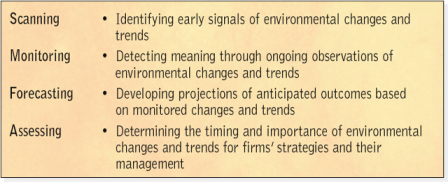 The continuous process includes four activities: 1) scanning- identifying early signals of potential change or detecting changes that are already underway 2) monitoring- Observing environmental changes to see if an important trend is emerging 3) forecasting- developing feasible projections of what might happen and how quickly 4) assessing- determining the timing and significance of the effects of environmental changes and trends on strategy |
|
A) Industry
B) Industry Environment Analysis |
A) is a group of firms producing products that are close substitutes
B) Has a more direct effect on the firm's strategic competitiveness and AAR. The intensity of industry competition and an industry's profit potential are functions of the 5 Forces of Competition |
|
The Five Forces Model (5 Components)
|
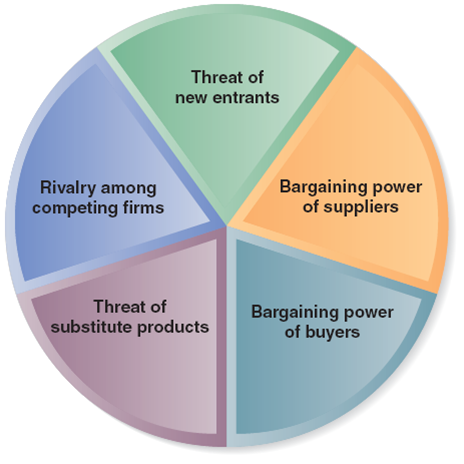 1. Threat of new entrants 2. Bargaining Power of Suppliers 3. Bargaining Power of Buyes 4. Threat of Substitute Products 5. Rivalry Among Competing Firms |
|
Threat of New Entrants
|
-New entrants can threaten market share of existing competitors
-They bring additional production capacity -Likelihood that firms will enter an industry is a function of 2 factors: Barriers to Entry and Retaliation |
|
Barriers to Entry
|
1. Economies of Scale- incremental efficiency improvements thru experience as a firm grows larger
2. Product Differentiation- Uniqueness of product develops over time 3. Capital Requirements- competing in a new industry requires a firm to have resources to invest. Capital to invest may not be available to pursue the market opportunity even when a new industry is attractive 4. Switching Costs- the one-time costs customers incur when they buy from a different supplier. 5. Access to Distribution Channels- New entrants have to persuade distributors to carry their products, either in addition to or in place of those currently distributed 6. Cost Disadvantages Independent of Scale- Established competitors have cost advantages that new entrants cannot duplicate 7. Government Policy- can control entry into an industry thru licensing and permit requirements |
|
Intensity of Rivalry among Competitors
|
Competitive rivalry intensifies when a firm is challenged by a competitor's actions or when a company recognizes an opportunity to improve its market position.
Most prominent factors: -Numerous or Equally balanced competitors -Slow Industry Growth -High fixed costs or storage costs -Lack of differentiation or low switching costs -High strategic stakes -High exit barriers |
|
Strategic Groups
|
Is a set of firms emphasizing similar strategic dimensions to use a similar strategy
Implications: -Firms within a group offer very similar products and provide intense competitive rivalry -The closer the strategic groups, the greater the likelihood of rivalry. The greater the rivalry the greater the threats |
|
Competitor Analysis
|
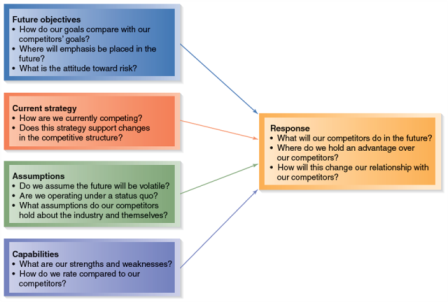 -About a firm's direct and indirect competitors -Gives details about the competitive dynamics expected to impact on a firm's efforts to generate performance |






